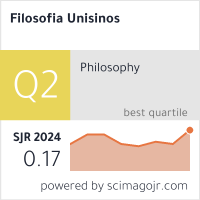Logic and foundations of artificial intelligence and society's reactions to maximize benefits and mitigate harm
DOI:
https://doi.org/10.4013/fsu.2024.251.10Keywords:
artificial intelligence, opportunities and risks, regulation.Abstract
Artificial intelligence is a general-purpose technology (GPT), term given to technologies that shape an entire era and reorient innovations by reconfiguring the economy’s logic and functioning and bringing in new business models. AI offers unprecedented opportunities and risks. The benefits of AI are extraordinary, as are its potential harms. Potential damage does not have the same degree of problematization, since the intensity and extent of the damage varies according to the domain and the object of application. To address the scale of this challenge, regulation is necessary but not sufficient. Standards, unwritten codes of compliance and arbitration procedures, supervision and auditability, AI governance, international agreements, compliance with current local and global standards and laws. All of this needs to be integrated. Society seems to have no alternative to facing the challenges of at least mitigating the damage already identified and trying to predict future damage in advance. The purpose of this article is to encourage reflection regarding the main initiatives that are available to society to protect its citizens and organizations from the potential harm caused by AI models, vis-à-vis the technology’s own limits to act in ethical and legal compliance.
Downloads
Metrics
Downloads
Published
How to Cite
Issue
Section
License
Copyright (c) 2024 Dora Kaufman

This work is licensed under a Creative Commons Attribution 4.0 International License.
I grant the Filosofia Unisinos – Unisinos Journal of Philosophy the first publication of my article, licensed under Creative Commons Attribution license 4.0 (which allows sharing of work, recognition of authorship and initial publication in this journal).
I confirm that my article is not being submitted to another publication and has not been published in its entirely on another journal. I take full responsibility for its originality and I will also claim responsibility for charges from claims by third parties concerning the authorship of the article.










